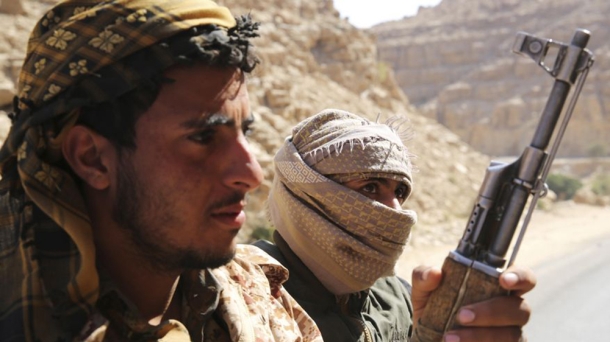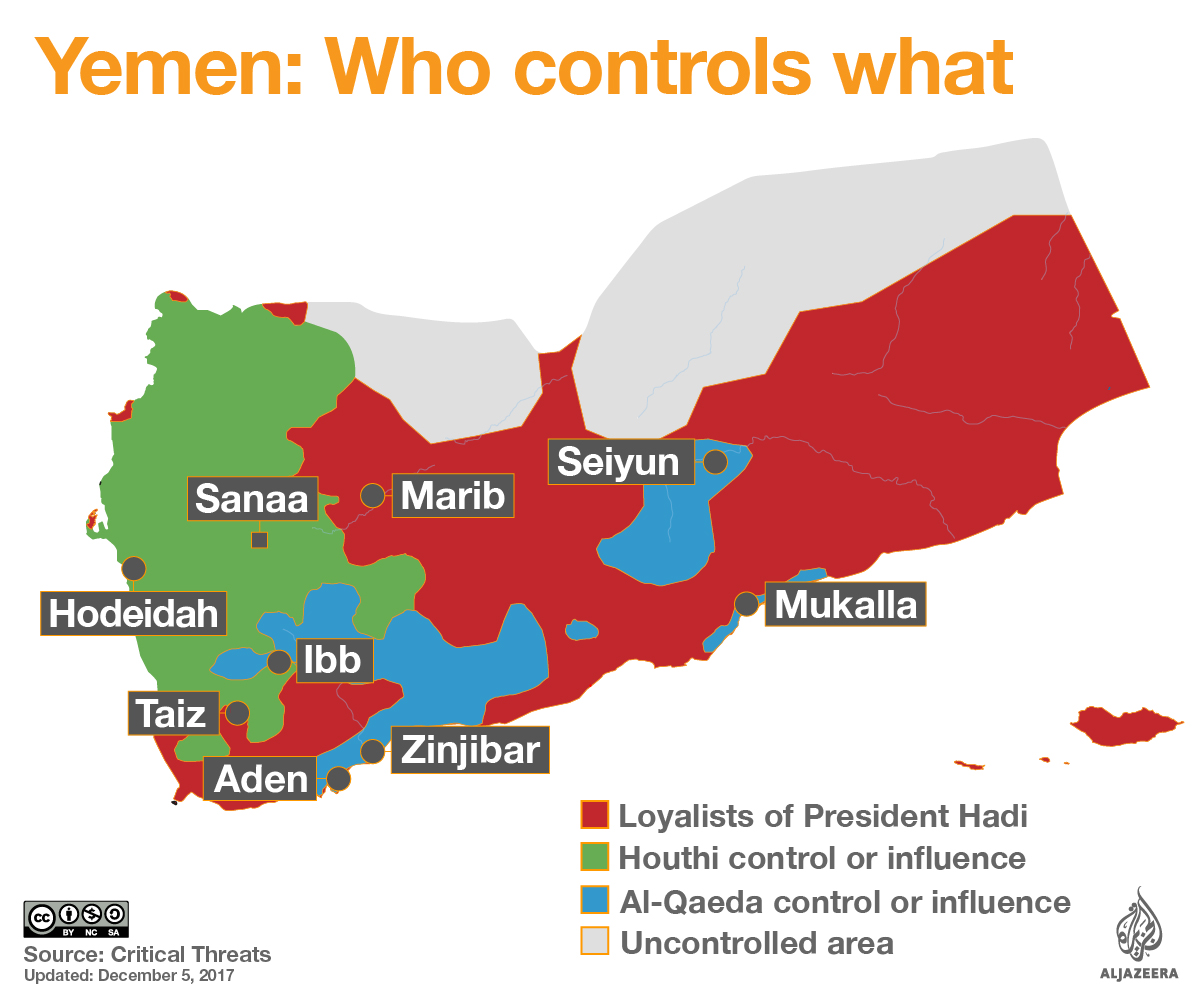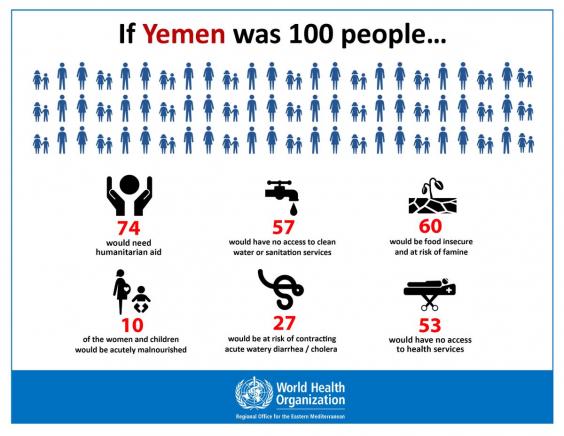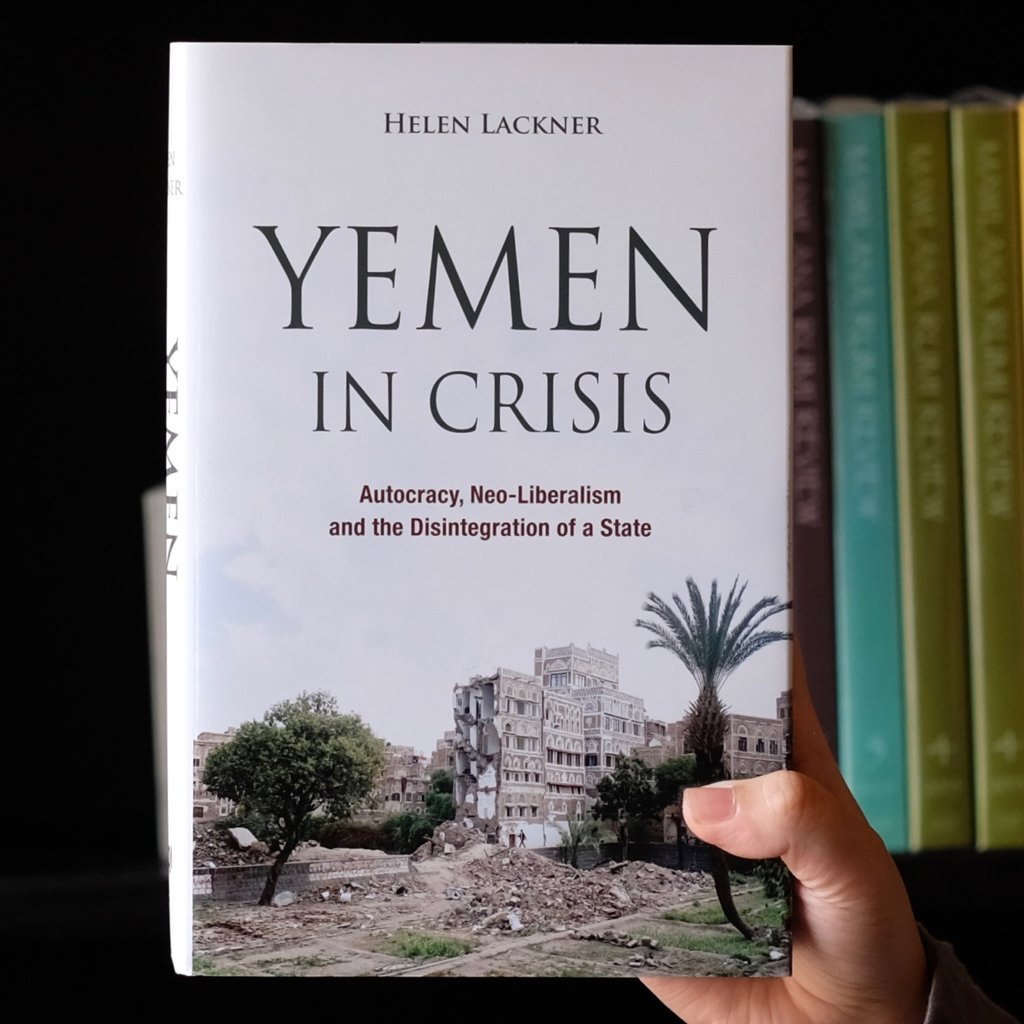
Yemen remains in the grip of its most severe crisis ever: the civil war between forces loyal to the internationally-recognised government of President Abdu Rabbuh Mansur Hadi and the Saudi-led coalition on the one side and those of the alliance between the Huthi rebel movement and former president Ali Abdullah Saleh on the other has devastated the country. Chaos is an appropriate term to describe the current situation in a turbulent region in the world. With no immediate prospects for the stable, peaceful, and democratic state that the hundreds of thousands of demonstrators called for during the 2011 uprisings, what went wrong? Why is there no prospect even of an internationally brokered plan to help end hostilities, let alone peace? Conflicts were due to a combination of internal rivalries between elites, rising demands of an increasingly impoverished population, international interventions from the Gulf Cooperation Council (GCC) and Western states as well as neo-liberal financiers.(1) On 12 July 2017, the United Nations Special Envoy told the Security Council that, “The situation in Yemen remains extremely grave. The intensity of the conflict increases day after day … The humanitarian situation is appalling… The country is not suffering from a single emergency but a number of complex emergencies, which have affected more than 20 million people and whose scale and effect will be felt long after the end of the war.”(2) The United Nations has also declared the spread of cholera in Yemen the worst ever recorded worldwide. There are now over 300 000 suspected cases and over 1,700 have died as a result of the epidemic. Fourteen million people are food insecure, of whom almost 7 million are at risk of famine.
This paper probes into the main causes behind the disintegration of the Yemeni state established in 1990. Early promises were dashed by a succession of problems culminating in the 2011 uprisings, the failed transition of 2012-14,(3) the Huthi takeover of Sana’a, their alliance with Saleh and the intervention of the Saudi-led coalition. It also deconstructs the rationale behind the events, which led to the collapse of the Yemeni state, as well as the reasons why the international military intervention, starting in 2015, has ensured the longer duration of the war, and its catastrophic consequences for the population.
Origins of the New Republic
The Republic of Yemen was established in 1990 by the merger of the Yemen Arab Republic (YAR) and the People’s Democratic Republic of Yemen (PDRY), the former resulting from the overthrow of the Imamate in 1962 by a group of republican officers and the latter emerging from the British administered Aden and the Protectorates. These states had different political orientations, with the YAR following a capitalist one while the PDRY was the only socialist state in the Arab world. Despite these differences, the two states shared common features, making Yemen a nation: a common culture, a similar fundamental social structure despite both regimes’ efforts to transform society in divergent directions, and a shared economic base of agriculture and fisheries with hopes of discovering oil. Families and, indeed, the states both relied considerably on remittances from migrant labour elsewhere in the Peninsula and beyond.
Unification was the most popular political slogan on both sides of the border, and was embraced by the population throughout the country. It was borne by forceps rather than through a democratic process: Saleh, who was President of the YAR [1978-2017], persuaded then southern leader al Beedh to agree to a full merger only a few hours after the PDRY’s ruling Yemeni Socialist Party (YSP) had confirmed its commitment to a federal agreement, leaving considerable autonomy to each former state. This shift laid the basis for tension and led to a short civil war in 1994, decisively won by Saleh with the military support of the factions, which had been defeated in the 1986 internal conflict in PDRY, including current ‘legitimate’ president Hadi, as well as the Salafis returning from Afghanistan.
 |
| [AlJazeera] |
Mounting Crisis and The 2011 uprisings
The Republic of Yemen’s first two decades were characterised by a series of economic crises. More than 800 000 Yemenis were deported from the GCC states when Yemen voted against the UNSC resolution 678 to approve military action against Iraq following its invasion of Kuwait. This reduced foreign economic aid to Yemen to almost zero, and simultaneously added close to a million job seekers at a time of high unemployment. Although this crisis receded by 1995 and aid was resumed, it is worth remembering that remittances from workers abroad, mostly in GCC states, remained much more important to Yemen’s economy than aid. Moreover, remittances reached directly mostly rural households, while aid went to state institutions in the early years. This shift changed in the late 1990s when IFIs actively weakened the state by financing organisations like the Social Fund for Development and the Public Works Project, which operated according to ‘efficient’ private sector principles, though in fact they are parastatals whose salaries allow them to poach the best staff from line ministries and thus reduce their technical capacity. Other factors like climate change, rapid population growth and the corruption of the ‘elite’ contributed to increasing poverty and worsening the gap between the majority of the population and the small group of beneficiaries of the Saleh regime. Earning potential within Yemen and beyond was negatively impacted by constraints on migration and lack of job creation policies at home.
Political tensions were growing through three episodes: a) the opposition parties represented in the Parliament regrouped in the Joint Meeting Parties in 2003, composed of Islah [the largest party itself combining two main groups Northern Hashed tribes and supporters of Muslim Brother ideology throughout the country], the YSP, Baathists, Nasserist, Popular Forces and al Haq [the last two Sada] parties. 2) The emergence of the Huthi movement entered into armed opposition to the Saleh regime in 2004 with a series of six short wars until 2010. 3) The rise of the southern separatist movement from 2007 onwards: initially with a peaceful approach, the regime’s aggressive response contributed to the growth and increased influence of that movement.
Combined with the social and economic crises, the only missing element was a trigger to start a major uprising. The turning point came in the form of the then apparently successful overthrow of the regimes in Tunisia and Egypt, encouraging Yemenis throughout the country to believe that fundamental change was possible. Symbolised in the slogan ‘Saleh out’ the movement included thousands of independent youth and women, as well as members of opposition parties, later joined by their leaderships. With a split in the military/security forces in March 2011, the country came close to large-scale warfare between the opposing military factions, while the anti-Saleh peaceful civil movement persisted but was increasingly influenced by the parties, in particular Islah and the Huthi movement. These developments led to open intervention by the ‘international community’ in the alleged pursuit of a peaceful solution to the crisis.
The Gulf Cooperation Council Agreement and the Transitional Regime
Various events in the course of 2011 gradually weakened the Saleh regime and led, by the end of the year, to the Gulf Cooperation Council Agreement, which included Saleh’s resignation and his replacement by his former Vice-President Abdu Rabbuh Mansour Hadi to lead a transitional regime. According to the GCC Agreement, the two-year transition would get the political and economic support of the international community. It included a government of national unity bringing together Saleh’s forces and those of the opposition, the restructuring of the military/security sector, and a National Dialogue Conference (NDC), which would design Yemen’s post transition structures; and would be followed by a Constitution Drafting Committee, a referendum on the draft constitution, and elections.
Most of these steps were formally undertaken between 2012 and 2014. However, they failed to achieve the desired result, largely due to inherent design faults, such as allowing Saleh not only to stay in the country, but even to continue leading the GPC, and allocating half of the government posts to his party. While this arrangement reflected the actual balance of power in 2011, it jeopardised the national unity government’s potential as ministers from the two main groups (GPC and Islah) competed for power and actively undermined each other. The government developed an unenviable reputation of being Yemen’s most corrupt ever, while failing to halt the deterioration of living conditions. The international community also shared considerable responsibility for the absence of social and economic development. After pledging close to USD 8 billion in September 2012, these funds were withheld under various pretexts, some more valid than others; but all resulting in a continued deterioration in public services.
This period witnessed the quiet rise of the Huthis who proceeded to consolidate their control over their northern governorate of Sa’ada. They expanded their control zone militarily and politically westward towards the Red Sea, aiming to control the small port of Midi to ensure they were not landlocked, as well as controlling the entire western part of the border with Saudi Arabia. They also moved east into Jawf governorate, again on the Saudi border, but this time in the belief that the area had significant oil resources. Moreover, they expanded southwards and reached Amran town in mid-2014, only 50km north of Sana’a after taking over the stronghold of the senior Hashed leaders.
There have been several points of correlation between the waning Transitional Regime and the rise of the Huthis. The former was known for its acts of corruption, incompetence, and inability to address the social and economic problems of the population; whereas the latter benefited from their (then secret) alliance with Saleh. A final contributor to their success was the internal rivalry within the Transitional Regime. Hadi had sought to weaken Islah by allowing the Huthis to defeat them, with the intention of controlling the Huthis. One can only presume that he was unaware of their cooperation with Saleh.
In the summer of 2014, anti-government large demonstrations contested the IMF-recommended rises in fuel prices. The Huthis capitalised on their image as an oppressed minority while supporting the popular demands and pushing for government accountability. They managed to take over Sana’a on 21 September 2014, and consolidated their position in the following months.
By January 2015, the submission of the new constitution draft to the post NDC body was an excuse for a final showdown. Both Huthis and Saleh considered the proposed federal state to be unacceptable for different reasons. Hadi and his new government were put under house arrest, as the Huthi-Saleh military forces moved further south, and captured Aden by March. After escaping from Sana’a, Hadi named the country’s interim capital. He and his ministers escaped to Riyadh, while requesting military support from the GCC states to restore the transitional regime.
A Wider Radius of the War
In the regional context, there was a likelihood of a victory in favour of the Saleh-Huthi forces in spring 2015. The newly appointed Minister of Defence in Saudi Arabia, ambitious young Mohammed bin Salman (MBS) saw the Yemen downturn as an opportunity to prove himself as a new leader, full of initiative, with the determination of solidifying Saudi Arabia’s role in the region. He presumed his modern air force, equipped with the latest Western weaponry, would easily defeat the ill-trained forces of the poorest state in the Arab world. The Saudi-led coalition destroyed the Yemeni air force on day one of the war. By the summer of 2015, it became imperative to involve ground troops, mostly from the UAE and other coalition members, primarily Sudan, alongside mercenaries from various Latin American states. This tactic enabled the Coalition forces to ‘liberate’ the area of the former PDRY and some of the north east of the country by the autumn of 2015. However, the military stalemate has prevailed.
The UN-sponsored negotiations process has failed three times to stimulate a settlement plan between the warring parties in the country. Since mid-2016, the UN mediation has not been able to convene another round of talks. There have been two main political developments in the last two years:
a) In the areas controlled by the Huthis, worsening tension within the Huthi-Saleh alliance, culminated in Huthis killing Saleh in his Sana’a residence on 4 December 2017, leaving them in full control of the northern highlands. This may well be the peak of their power, as they now have to add to their list of rival forces loyal to Saleh, including those who stayed in home in the fighting and those who left after the assassination of their leader.
b) The disintegration and fragmentation of the ‘liberated’ areas. The main characteristic of the Hadi government is its absence: southern governorates are under the control of a range of forces including southern separatists [the Southern Transitional Council (STC) established in May 2017 is currently the most influential of these groups], various local regional forces, and jihadis. The United Arab Emirates has set up, financed, trained and deployed military and security forces, known in the western governorates as Security Belts, and in the eastern ones as Elite Forces. They are all primarily composed of local Salafis and do not form a coherent body. The northern areas are under the control of Vice President (since April 2016) Ali Mohsen al Ahmar, an Islamist on the extremist end of the Islahi spectrum. State institutions have largely disintegrated, partly due to the failure of the internationally-recognised regime in paying the staff salaries.
While the Arab Coalition includes several states, the decision-making process is controlled by Saudi Arabia and the UAE. However, there is increasing divergence in policy and strategy between them, visible in the South. Regardless of the rhetoric, the Emirati forces are actively supporting separatists via the STC and the security forces. While claiming to address the problem of jihadi groups (AQAP and Daesh), most of their interventions and arrests are against Islahis, considered by the UAE to be Muslim Brothers, whom they pathologically detest. Outsiders have difficulty understanding support to extremist Salafi groups who are more dangerous to a moderate Islam than the Muslim Brothers. Divergence with the Saudi regime focuses on this aspect as it supports Vice President Ali Mohsen, who is a main Islahi leader, and have had, for decades, very different approaches to Muslim Brother-related institutions.
Deepening Humanitarian Crisis
In the poorest Arab country with high levels of poverty and malnutrition, the current war has caused the world’s worst humanitarian crisis. 22 millions of the 29 million population are in dire need of humanitarian assistance, 16 million individuals still lack clean water and sanitation, 18 millions food insecure, including 8 million ‘on the brink’ of famine, more than 1 million victims of cholera, another world record.(4)
About 16000 individuals have been killed by the Coalition Forces’ air strikes, the most effective weapon has been the blockade of Yemen’s main port Hodeida and other Red Sea ports, as well as the imposed closure of Sana’a airport. Several thousands of Yemenis have died by hunger, disease, and other side effects of the blockade, a driving force behind the humanitarian crisis.
 |
| [World Health Organization] |
An Open-ended War?
The perpetuation of the Yemeni war derives from two main reasons: a) the international intervention has added another layer of complex issues, which seem to be irrelevant to Yemen and Yemenis. The main issue is the Iran-Saudi Arabia rivalry. Saudi accusations that the Huthis are no more than ‘Iranian proxies’ have become part of the official discourse throughout the region and beyond, including the United States. While the reality is that Iran’s actual involvement is minimal, it benefits from a massive propaganda advantage in exchange for very limited practical support to the Huthis. This added element tends to complicate the pursuit of a solution.
The second reason is both internal and external vis-à-vis Yemen. In the domestic context, numerous figures on all sides benefit from the war. Not only do they have no incentive to bring it to an end; but, have every incentive to prolong it. They include men and boys in manning checkpoints who collect ‘taxes’ on passengers and goods (including the basics to keep people alive, food, fuel and people seeking medical aid). Next along the chain are the Huthis in the areas they control who both fill their pockets and finance their ‘administration’ through the ransoming of traders and others; but, don’t use this cash to pay salaries of medical, education or any other civil staff. In the ‘liberated’ areas, the beneficiaries of the war include any number of groups, ranging from jihadis of AQAP and Daesh to officials of everything from the various southern separatist groups to the few remaining loyalists of the Hadi government. Outside Yemen, members of Hadi government collect massive salaries, submit exorbitant bills to the coalition, but fail to pay staff in country. This is the irony of the political economy of war.
On the International level, Western states sell highly-sophisticated expensive weapons and ammunition to Saudi Arabia and the UAE. According to SIPRI in the period 2013-17, Saudi Arabia was the second largest importer of arms in the world, with 10% of all arms imports. Its share of imports had risen by 225% from the previous 5-year period; 61% of its weapons came from the USA, 23% from the UK and only 3.6% from France. In the case of the UAE, which is the fourth largest importer, the United States is also the largest supplier (58%) followed by France (13%) and Italy (6%).(5) Most recently, most of us have seen President Trump sitting with MBS doing a ‘show and tell’ display to the media of the latest proposed sales.
Conclusions
This paper has provided a rapid sketch of the events which have led to the disintegration of Yemen. Fundamentally, the collapse is due to a combination of internal rivalries between elites, the rising demands of a population which has experienced increased hardship, and the impact of international interventions, both from the neo-liberal international financiers and the politically-motivated actors in support or opposition to the internal rival factions.
The current war shares some characteristics with the Lebanese Civil War with different external actors attempting to use local factions to pursue international rivalries. Yemenis suffer the consequences to a nightmarish extent. A small ray of hope is emerging in early 2018 with the appointment of a new Special Envoy of the UN Secretary General as well as the presence in the UNSC of members who are committed to bring this war to an end. This window of opportunity, however, will demand major transformations of the current UNSC resolutions, as well as a new complex and sophisticated approach involving many actors currently excluded from the official negotiating process. This will not be an easy process and success is by no means guaranteed, particularly in view of the complicating international dimension of Saudi-Iranian rivalry.

(1) Helen Lackner, “Yemen in Crisis: Autocracy, Neo-Liberalism and the Disintegration of a State”, Saqi Books 2017
(3) A detailed analysis of the transition can be found in Helen lackner (2016), Yemen’s Peaceful Transition from Autocracy: could it have succeeded? Stockholm, International Institute for Democracy and Electoral Assistance
(4) UN News, “Secretary-General's remarks to the Pledging Conference on Yemen”, April 3, 2018 https://www.un.org/sg/en/content/sg/statement/2018-04-03/secretary-generals-remarks-pledging-conference-yemen-delivered
(5) SIPRI, “Trends in international arms transfers, 2017”, https://www.sipri.org/publications/2018/sipri-fact-sheets/trends-international-arms-transfers-2017
